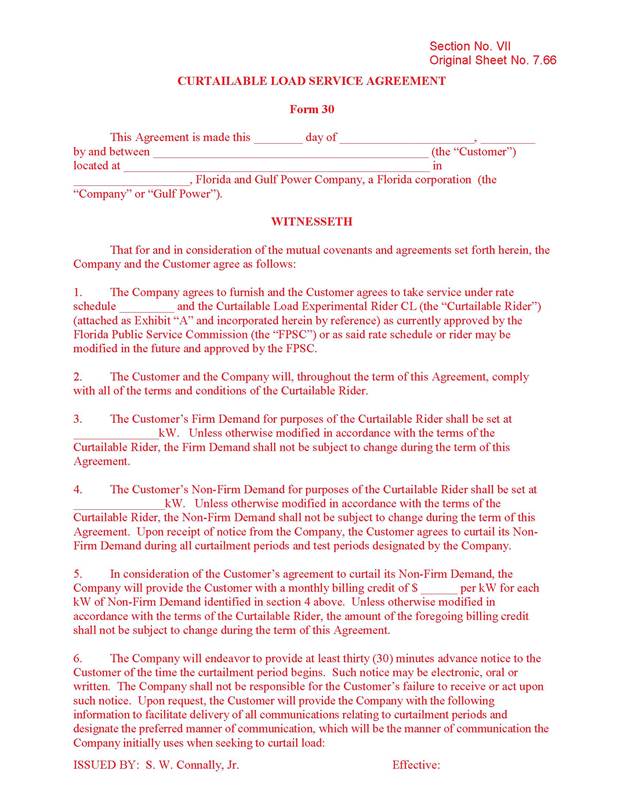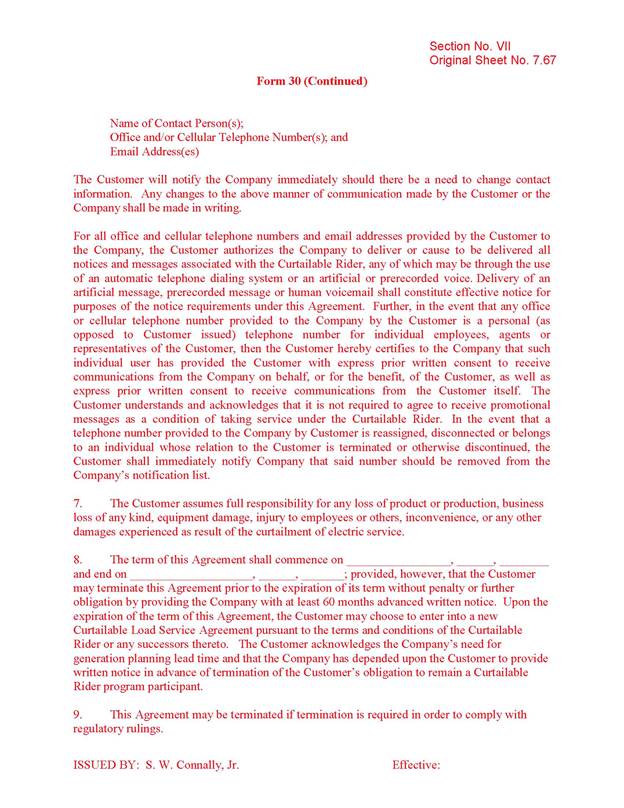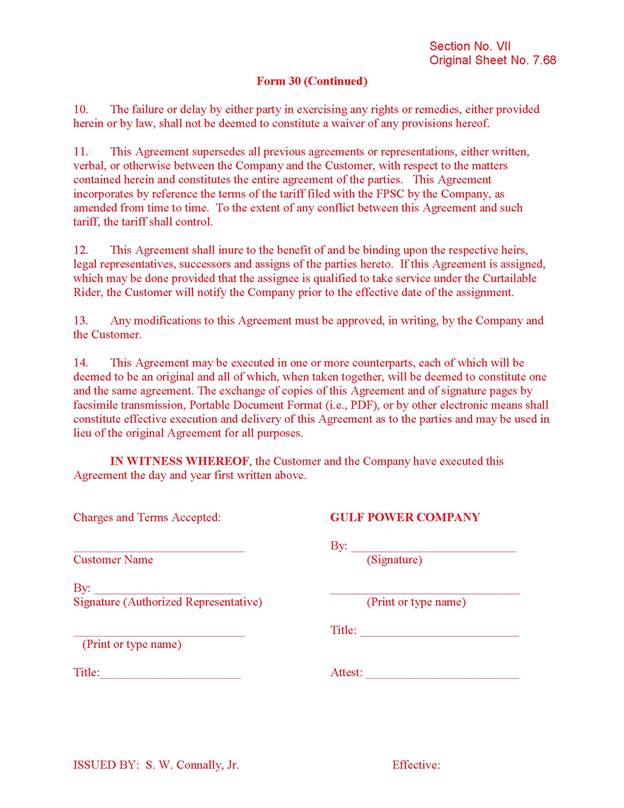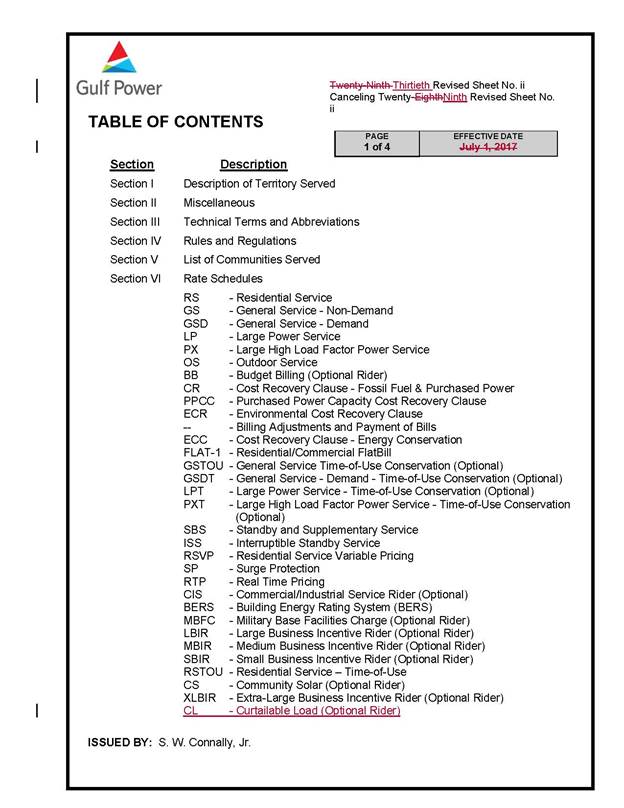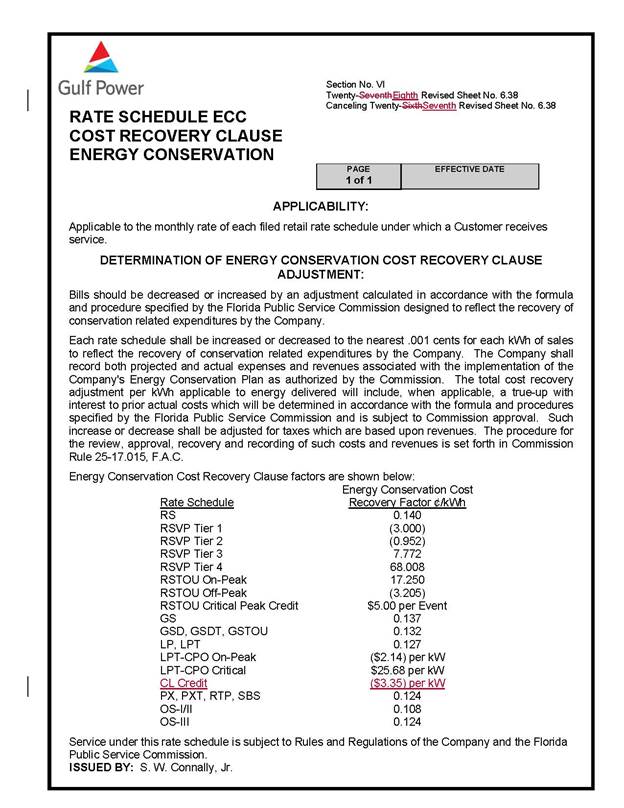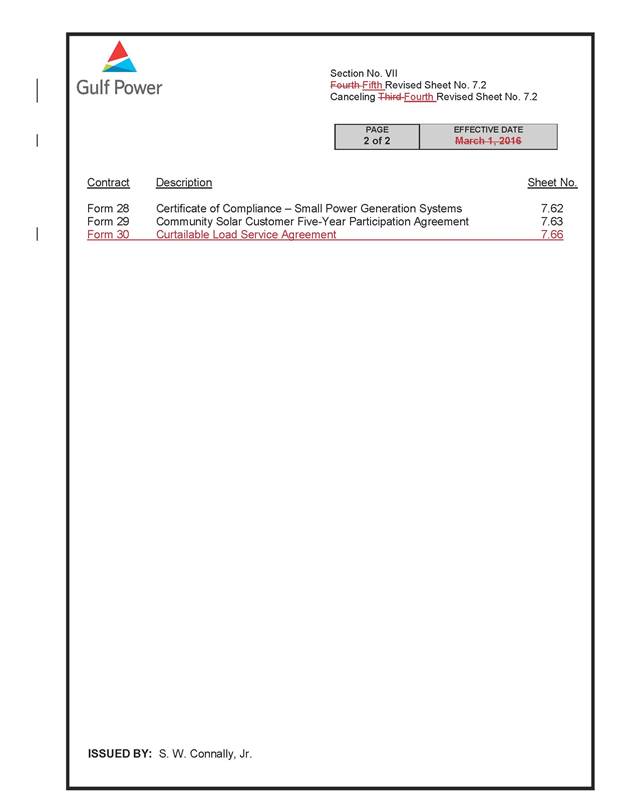Discussion
of Issues
Issue 1:
Should the Commission approve Gulf Power Company’s
request to include its experimental Curtailable Load program and associated
tariffs in the Company’s DSM plan?
Recommendation:
Yes. The Curtailable Load program fulfills a
requirement of the Settlement reached in Gulf’s 2016 base rate proceeding. It
fulfills the policy objectives of the Florida Energy Efficiency and
Conservation Act (FEECA), it is directly monitorable, yields measurable results
and it is cost effective. Staff recommends approval of Gulf’s proposed
experimental Curtailable Load program and associated tariffs. (Mtenga)
Staff Analysis:
The criteria used to review the appropriateness of
DSM programs are: (1) whether the program advances the policy objectives of the
FEECA and its implementing rules; (2) whether the program is directly
monitorable and yields measurable results; and (3) whether the program is
cost-effective. Staff
has reviewed Gulf’s petition for its experimental Curtailable Load program and
it appears to be consistent with these criteria.
Program
Description
The Curtailable
Load program is available to industrial and commercial customers who take
service under rates LP, LPT, PX, or PXT. This program provides qualifying
customers capacity payments for load which can be curtailed during certain
conditions. Customers who qualify for the program must commit to a minimum
non-firm demand reduction of 4,000 kilowatts (kW). A customer must execute a Curtailable
Load Service Agreement (CL Service Agreement) for a term of 10 years beyond the
anticipated in-service date of Gulf’s next generation capacity need in 2023. Multiple
accounts may be combined to meet the demand and load factor requirements
provided that the demand response is coordinated from a single location and a
single point of contact is provided to Gulf for notification. The program is
only applicable to locations at which the interruption of electric service will
primarily affect only the customer and will not significantly affect members of
the general public, nor interfere with functions performed for the protection
of public health or safety unless adequate on-site backup generation is
available. The program will be closed to additional customers when the total
non-firm demand subject to CL Service Agreements reaches 50 megawatts.
A curtailment period may be designated by Gulf when
non-firm demand curtailment is necessary to alleviate any conditions that could
lead to the interruption of power supply in the local area or region. Gulf
expects to provide at least 30 minutes advance notice of the curtailment period.
Gulf may terminate service under the program at any time for the customer’s
failure to comply with the terms and conditions of the CL Service Agreement. An
incident of non-compliance will be considered to have occurred if the customer’s
maximum integrated 15 minute demand to the nearest kW during a curtailment
period is greater than the firm demand. Customers may terminate their CL Service
Agreement without penalty or liability by providing the Company with at least
five years advance written notice, which staff deems sufficient for planning
purposes to acquire or build firm capacity. The program as described meets the
requirement of the Settlement to offer a curtailable rate program. In response
to staff’s data request, Gulf stated that the signatories to the Settlement did
not indicate any material concerns with the petition.
FEECA Policy Objectives/Program Monitoring and
Evaluation
FEECA emphasizes reducing the growth rate of peak demand
and reducing and controlling growth rates of electricity consumption. The program
allows qualified customers an incentive to decrease their firm peak demand.
Customers taking service under the program will initially receive a monthly
bill credit of $3.35 per kW which is subject to curtailment. This initial
monthly credit was determined by Gulf to be the maximum recurring monthly
credit that would not cause the programs costs to be higher than the benefits
realized from the avoided capacity. The bill credit amount will be subject to
review and adjustment in the Company’s Energy Conservation Cost Recovery (ECCR)
Clause proceedings. The program is experimental in nature with a December 31,
2021, termination date unless Gulf files for an extension through the
Commission. Gulf will use several criteria in evaluating this program. These
include: customers’ interest in the program, customers’ responses to
curtailment periods, program implementation and management costs and the Company’s
capacity needs.
Cost-Effectiveness
Review
Pursuant
to Rule 25-17.008, Florida Administrative Code, Gulf provided a
cost-effectiveness analysis of the program using the Participant test, the Rate
Impact Measure (RIM) test, and the Total Resource Cost (TRC) test. The
Participant test analyzes the costs and benefits from a program participants’
point of view. The RIM test ensures that all ratepayers will benefit from a proposed
DSM program, not just the program participants. The TRC test measures the
overall economic efficiency of a DSM program from a system perspective. Each
test estimates the benefits and costs, and the program is determined to be
cost-effective if the ratio of benefits to costs is greater than one. Staff has
reviewed the assumptions associated with Gulf’s program savings and recommends
that they are reasonable. Table 1-1 below shows the results for
cost-effectiveness for the Rate Rider program.
Table 1-1
Cost-Effectiveness Test
Results
|
Participant Test
|
RIM Test
|
TRC Test
|
|
∞
|
1.00
|
17.11
|
Source:
Gulf’s Petition
Gulf
anticipates current customers receiving service under the Critical Peak Option
for Rate LPT to be likely participants in the program, which would result in an
increase of approximately $134,000 to the ECCR clause in 2018. The estimated
monthly rate impact to the ECCR factor for this scenario is $0.02/1,000 kWh for
a residential customer. The impact to the ECCR clause for 1000 kWh if all 50 MW
are subscribed is $0.15 per customer.
Conclusion
The Curtailable Load program fulfills a requirement of the
Settlement reached in Gulf’s last base rate proceeding. It fulfills the policy
objectives of FEECA, it is directly monitorable, yields measurable results and
it is cost effective. Staff recommends approval of Gulf’s proposed experimental
Curtailable Load program and associated tariffs.
Issue 2:
Should this docket be closed?
Recommendation:
Yes. This docket should be closed and the tariffs
shall become effective upon the issuance of the consummating order unless a
person whose substantial interests are affected by the Commission’s decision
files a protest within 21 days of the issuance of the consummating order. If a
timely protest is filed, the tariffs should not go into effect, pending
resolution of the protest. (Dziechciarz)
Staff Analysis:
This docket should be closed and the tariffs shall
become effective upon the issuance of the consummating order unless a person
whose substantial interests are affected by the Commission’s decision files a
protest within 21 days of the issuance of the consummating order. If a timely
protest is filed, the tariffs should not go into effect, pending resolution of
the protest.






